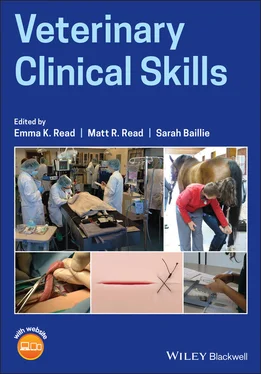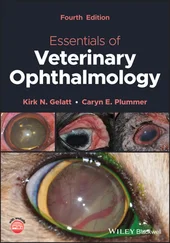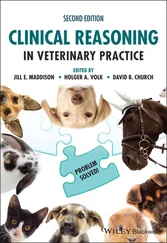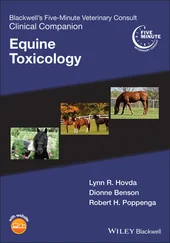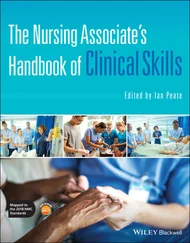Veterinary Clinical Skills
Здесь есть возможность читать онлайн «Veterinary Clinical Skills» — ознакомительный отрывок электронной книги совершенно бесплатно, а после прочтения отрывка купить полную версию. В некоторых случаях можно слушать аудио, скачать через торрент в формате fb2 и присутствует краткое содержание. Жанр: unrecognised, на английском языке. Описание произведения, (предисловие) а так же отзывы посетителей доступны на портале библиотеки ЛибКат.
- Название:Veterinary Clinical Skills
- Автор:
- Жанр:
- Год:неизвестен
- ISBN:нет данных
- Рейтинг книги:5 / 5. Голосов: 1
-
Избранное:Добавить в избранное
- Отзывы:
-
Ваша оценка:
- 100
- 1
- 2
- 3
- 4
- 5
Veterinary Clinical Skills: краткое содержание, описание и аннотация
Предлагаем к чтению аннотацию, описание, краткое содержание или предисловие (зависит от того, что написал сам автор книги «Veterinary Clinical Skills»). Если вы не нашли необходимую информацию о книге — напишите в комментариях, мы постараемся отыскать её.
Provides instructors and students with clear guidance on best practices for clinical skills education Veterinary Clinical Skills
Veterinary Clinical Skills
Veterinary Clinical Skills — читать онлайн ознакомительный отрывок
Ниже представлен текст книги, разбитый по страницам. Система сохранения места последней прочитанной страницы, позволяет с удобством читать онлайн бесплатно книгу «Veterinary Clinical Skills», без необходимости каждый раз заново искать на чём Вы остановились. Поставьте закладку, и сможете в любой момент перейти на страницу, на которой закончили чтение.
Интервал:
Закладка:
Integration of clinical skills in the curriculum requires consideration of when to present the material and whether to integrate it with other competencies. It is not enough for learners to learn the technical performance alone because without the knowledge of when to use the skill, when not to use the skill and how to modify the performance of the skill when needed, then the learner performs as a trained technician (Michels et al., 2012). The development of a veterinary professional requires that the learner has declarative or background knowledge, procedural knowledge about how to perform the skill, and can also apply diagnostic reasoning and clinical decision‐making. In effect, developing a clinical skills program means achieving a comprehensive consensus on all of these aspects and not simply generating a list of skills (Michels et al., 2012).
Initially, the emphasis of outcomes‐based education in the health professions was on the postgraduate learner, but more recently there has been a shift to incorporate undergraduate training as well (Ferguson et al., 2017). The competency‐based educational approach supports the continual documented improvement of learner performance from novice to proficient and emphasizes training in the clinical workplace (Dreyfus, 2004). Assessment is becoming increasingly focused on a programmatic approach that includes multiple direct observations of student performance that are then integrated to provide a complete picture of learner competence (Bok et al., 2018; Norcini et al., 2018; van Melle et al., 2019).
The development of entrustable professional activities (EPAs) is ushering in a new era for skills training where students are ultimately encouraged to bring individual skills and competencies together in a comprehensive authentic workplace procedural performance (ten Cate, 2005). EPAs are activities that are performed in the workplace and offer a chance for observation and assessment. Assessors have a chance to observe “in the moment” and comment on the learner's ability to perform tasks required in practice. The repetitious completion of such activities in the clinical veterinary teaching environment allows the trainee to grow and learn from the formative feedback provided to them. The AAVMC's CBVE working group recently defined nine different domains and 32 competencies in a framework, which represents consensus across a number of veterinary programs (Molgaard et al., 2018a; Molgaard et al., 2018b). The group then described eight EPAs that can be used for assessing and documenting learner development during the clinical years of the training program. Clinical skills training is now evaluated across programs through the use of OSCEs to assess introductory individual skills and short procedures in the years prior to clinical rotations, and EPAs and workplace‐based assessments that evaluate more complex procedures or activities where multiple competencies need to be performed simultaneously in the clinical environment (Petersa et al., 2017; ten Cate et al., 2018; Molgaard et al., 2018b).
Programmatic assessment has recently been validated in veterinary medicine and shows that a change in performance is not simply due to variability between raters but is due to variance in learners’ growth (Bok et al., 2018). This is important because we can now demonstrate learner change over time and predict the rate at which mastery will occur (Pusic et al., 2015). Limitations of accreditation (e.g. American Veterianry Medical Association’s Council on Education mandating the maintenance of a four‐year program) and reduced financial support (e.g. in the United States, many colleges have poor public support and rely heavily on tuition dollars) may mean that true time‐independent advancement may prove challenging for veterinary programs.
In summary, veterinarians used to talk about “see one, do one, teach one,” but today this is no longer considered a valid approach to teaching and learning skills (Michels et al., 2012). Clinical skills teaching, learning, and assessment have evolved. There is a growing body of evidence regarding learning theories, teaching and assessment principles, and learner development that can be used to the advantage of learner, teacher, and other stakeholders. An abundance of research and scholarship has changed the way that educators teach and the way programs are designed. This book is intended to focus on teaching, learning, and assessment of clinical skills in the modern veterinary curriculum and is a resource guide for students, as well as their instructors. This book is written for both veterinary and veterinary nursing students and includes chapters regarding development of skills curriculum ( Chapter 2), how skills are best taught and learned ( Chapter 3), and how skills are best practiced prior to assessment ( Chapter 4). Also included are chapters on how learners know if they are learning what they need to ( Chapter 5), how learners know they are being assessed fairly ( Chapter 6), how learners can best learn in a simulated environment ( Chapter 7), how to make use of peer teachers ( Chapter 8), and what other skills are vital to a successful practice career ( Chapter 9). The appendices include examples of OSCE assessments and recipes for simple models that instructors and learners can use and make.
References
1 Baillie, S., Crossan, A., Brewster, S., et al. 2005. Validation of a bovine rectal palpation simulator for training veterinary students. Stud Health Technol Inform, 111, 33–36.
2 Bain, B., Salois, M. 2019. Employment, starting salaries, and educational indebtedness of year‐2018 graduates of US veterinary medical colleges. J Am Vet Med Assoc, 254, 1061–1066.
3 Bok, H., Jaarsma, D., Tenuissen, P., et al. 2011. Development and validation of a competency framework for veterinarians. J Vet Med Educ, 38, 262–269.
4 Bok, H., de Jong, L., O’Neill, T., et al. 2018. Validity evidence for programmatic assessment in competency‐based education. Perspect Med Educ, 7, 362–372.
5 Cake, M., Bell, M., Williams, J., et al. 2016. Which professional (non‐technical) competencies are most important to the success of graduate veterinarians? A Best Evidence Medical Education (BEME) systematic review: BEME guide no. 38. Med Teach, 38, 550–563.
6 Cruess, R. L., Cruess, S. R., Steinert, Y. 2016. Amending Millers’ pyramid to include professional identity formation. Acad Med, 91, 180–185.
7 Dilly, M., Read, E., Baillie, S. 2017. A survey of established veterinary clinical skills laboratories from Europe and North America: Present practices and recent developments. J Vet Med Educ, 44, 580–589.
8 Doucet, M., Vrins, A. 2009. The importance of knowledge, skills, and attitude attributes for veterinarians in clinical and non‐clinical fields of practice: A survey of licensed veterinarians in Quebec, Canada. J Vet Med Educ, 36, 331–342.
9 Dreyfus, S. E. 2004. The five‐stage model of adult skill acquisition. Bull Sci Technol Soc, 24, 177–181.
10 Ferguson, P., Caverzagie, K., Nousiainen, M., et al. 2017. Changing the culture of medical training: An important step toward the implementation of competency‐based medical education. Med Teach, 39, 599–602.
11 Flexner, A. 1910. Medical education in the United States and Canada. Bull World Health Org, 80, 594–602, extracted from Bulletin Number 4 (1910) of the Carnegie Foundation for the Advancement of Teaching, New York.
12 Hecker, K., Read, E., Vallevand, A., et al. 2010. Assessment of first‐year veterinary students’ clinical skills using objective structured clinical examinations. J Vet Med Educ, 37, 395–402.
13 Hubbell, J., Savillle, W., Moore, R. 2008. Frequency of activities and procedures performed in private equine practice and proficiency expected of new veterinary school graduates. J Am Vet Med Assoc, 232, 42–46.
Читать дальшеИнтервал:
Закладка:
Похожие книги на «Veterinary Clinical Skills»
Представляем Вашему вниманию похожие книги на «Veterinary Clinical Skills» списком для выбора. Мы отобрали схожую по названию и смыслу литературу в надежде предоставить читателям больше вариантов отыскать новые, интересные, ещё непрочитанные произведения.
Обсуждение, отзывы о книге «Veterinary Clinical Skills» и просто собственные мнения читателей. Оставьте ваши комментарии, напишите, что Вы думаете о произведении, его смысле или главных героях. Укажите что конкретно понравилось, а что нет, и почему Вы так считаете.
